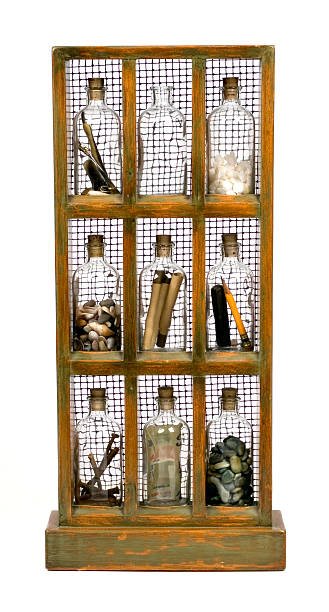Types Of Curio Cabinets

Curio cabinets are specialised form of display case, designed exclusively for displaying collections of curios, such as decorative figurines or other intriguing objects which evoke curiosity, and possibly share a certain theme. A curio cabinet could contain any number of items, from ancient to modern antiques, period pieces to works of the future, each displaying an individual piece with varying levels of care and commitment to preservation. As a result, every collection will display a different range of items, from the fragile to the not-so-frequently-seen. There is also a great need for specialized storage cabinets to display rare or precious works of art, since most curio cabinets are not designed for general display purposes.
For those curio cabinets which are specifically designed as an interior display, there are three basic types: the glass curio cabinets, wooden display cabinets and steel cabinets. All three types exhibit different features, including the types of doors, shelves and drawers available for displaying individual curios or items in their various positions. The type of material used for the construction of the cabinet is also important, as it may have aesthetic and/or practical considerations to bear in mind when determining which material is best suited for a particular display cabinet.
Glass curio cabinets are made from a variety of materials, including glass (or even steel). In general, they exhibit a contemporary and highly stylized design, with high quality glass panels featuring highly polished surfaces, along with decorative metal inserts. Some of the more common types of surfaces for these cabinets include clear glass, beveled glass, champagne colored glass. Some display cabinets exhibit a mirrored finish on one or both sides. These decorative finishes are especially popular with works of art which require the display of intricate details at multiple angles.
Wooden curio cabinets exhibit an antique style design, usually featuring carved wood panels. The most common types of wood used for this design include oak, cherry and mahogany. While the style and look of the wood may dictate the type of wood used, the color of the wood is often displayed prominently in China display cabinets, displaying rich mahogany colors and accents. Some of the most common uses for wooden curio cabinets include displaying glass artifacts, such as figurines and vases. For more information on this topic, visit this site: northeastfactorydirect.com.
Steel curio cabinets are designed to display a wide array of items, ranging from figurines to books and pottery. They are usually available in three different styles, all of which exhibit a unique modernistic style. One of the more popular types of corner curio cabinets exhibit an artistic design in their styling. These display styles are typically clear with chrome accents, making the items being displayed appear to float in space. The three most common corner curio cabinet display styles include the traditional side by side, which allows for a display of two items on opposite sides of one another, the adjustable side by side, which allow for a larger display to take up only a small portion of the wall, and the L-shaped display, which allow for a smaller display to stretch across the width of the room.
When selecting curios for a home, the size of the room will often determine the type of cabinet that is chosen. Generally, curio cabinets are not very big, as most do not have much in the way of shelving or other storage options. The amount of space available will also affect the size of the curio cabinets that can be chosen. There are many sizes of curios that can be found, from very small antiques to huge displays with several shelves. Check out this post for more content related to this article: https://www.britannica.com/topic/cabinet-furniture.
